Who is St. Nicholas, and why is he accompanied by the angels and devil?
When and where can you meet this strange trio?
Read more in our article about this charming tradition!
Who is Saint Nicholas, and where did he come from?
St. Nicholas’ Day is a holiday that originated from Saint Nicholas of Myra.
He was a bishop during the fourth century and was widely known for his generosity towards children in need, struggling families, and the sick.
Saint Nicholas often left coins in people’s shoes and gave surprise gifts throughout his life. This tradition has been carried on by many people today, especially around this time of year.
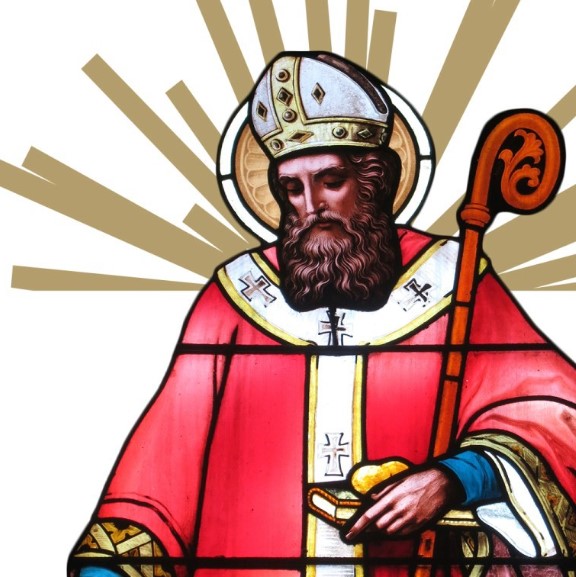
When does St. Nicolas arrive?
It is widely believed that Saint Nicholas comes to celebrate his special day on December 5th or 6th (December 19th, according to the Julian calendar) and departs before Christmas.
This custom is celebrated in many countries and regions, including Austria, Belgium, Croatia (known as Sveti Nikola), the Czech Republic (known as Svatý Mikuláš), northeast France (known as Saint Nicolas), western and southern Germany (known as Sankt Nikolaus), Hungary (known as Mikulás), Luxembourg, the Netherlands (known as Sinterklaas), Poland (known as Święty Mikołaj), Romania (known as Moș Nicolae), Serbia (known as Sveti Nikola), Slovakia (known as Svätý Mikuláš), Slovenia (known as Sveti Miklavž), and Ukraine (known as Sviatyi Mykolai).
On Saint Nicholas Day, children eagerly wait for him to arrive and leave a present under their pillow or in a boot on their windowsill, but only if they were good throughout the year.
On the other hand, children who misbehave may expect to find a twig or a piece of coal under their pillows instead of a gift.
Traditions
In some parts of northern Europe, such as the Low Countries and certain German-speaking regions, St. Nicholas Day is still celebrated as a special occasion when children receive cookies, candies, and gifts.
Children often leave letters for St. Nicholas and carrots or grass for his donkey or horse. The following morning, they discover small presents beneath their pillows or in the shoes, stockings, or plates they have set out for him. Oranges and chocolate coins are popular treats that symbolize St. Nicholas’s heroic act of paying the marriage dowries of three impoverished girls with gold. Additionally, candy canes, which resemble a bishop’s crosier, are often given out.
Curious about how St. Nicholas’ Day is celebrated around the world? Here are five traditions to explore.
Don’t forget to write a letter to Santa with the children!
St. Nicholas’ Day parades
The Netherlands has a unique way of kicking off the holiday season with elaborate parades that mark the arrival of Saint Nicholas from Spain.
Called “Sinterklaas” in Dutch, these parades take place in almost every town and city in the country. The parades typically feature someone dressed as Sinterklaas arriving on a horse, boat, carriage, or even helicopter.
Sinterklaas is a significant figure in the country’s culture and tradition. In the period between his arrival and St. Nicholas’ Day, which is celebrated on December 6th, Sinterklaas travels to hospitals, schools, and homes, leaving small gifts for well-behaved children.
This tradition is known as “pakjesavond,” which means “gift evening.” It is customary for the children to leave their shoes out the night before St. Nicholas’ Day, and they wake up to find small presents in them.
In return for the gifts, children often leave out a carrot, some hay, and a bowl of water for Sinterklaas’ horse. This gesture is a way of showing appreciation and respect for the hard work of Sinterklaas and his horse during their travels.
Overall, the Netherlands’ celebration of Sinterklaas is a festive and cherished tradition that brings together families and communities to celebrate the holiday season.
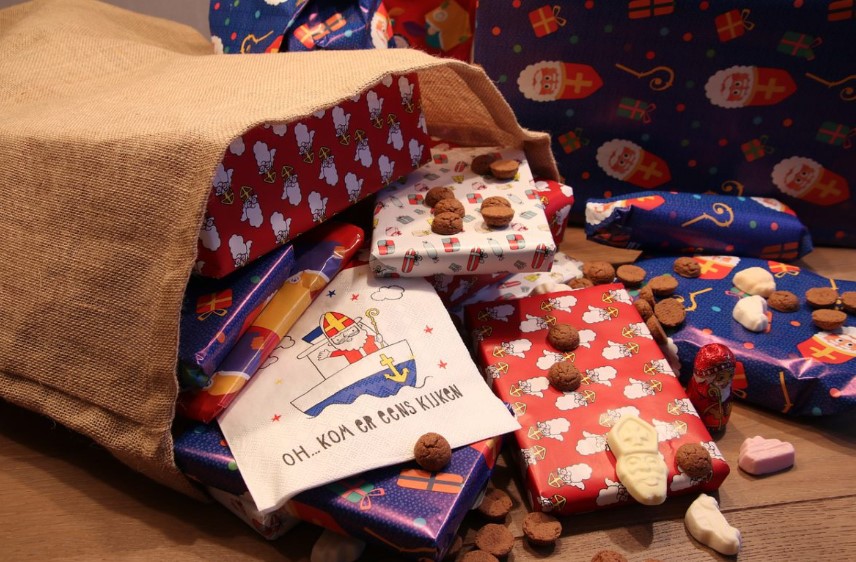
A boot in front of the fireplace
On the night before St. Nicholas’ Day, children leave a shoe or a boot outside their home, hoping to wake up to find it filled with gifts from Saint Nicholas.
However, similar to the concept of Santa Claus leaving coal for naughty children, Saint Nicholas might leave a stick instead of presents for misbehaving children. This tradition has variations across different countries, with some parents receiving a bag of salt or a switch to use as a discipline.
Today, most children will receive gifts from Saint Nicholas regardless of their behavior throughout the year. These gifts can range from hot chocolate and mandarin oranges to personalized notes, candy, and coins to be shared with family and friends.
Gifts for unmarried women
In Italy, unmarried women receive gifts on Saint Nicholas’ Day, just like children. They might attend a special mass to participate in Rito delle nubili, a ritual where they turn a column seven times to change their luck in finding a spouse.
Saint Nicholas is not only a patron of children and the needy, but also of virgins. A story of Saint Nicholas tells how he provided dowries for the three daughters of a poor man, ensuring they could marry well.
St. Nicholas’ Feast Day
In some countries, the holiday’s eve holds greater significance than the actual day.
It’s a time when families come together, exchange gifts, and celebrate. St. Nicholas’ Eve is an occasion for gift-giving and a big feast shared by family, creating memories that last a lifetime.
The traditional table is laden with delicious food, including Bishop’s wine, bread, St. Nicholas-shaped cookies, and a special main dish reserved for the holiday. Across the world, St. Nicholas’ Day is celebrated with a variety of traditional dishes, each one reflecting the unique culture and customs of the region.
It’s a time to indulge in local cuisines and enjoy the company of loved ones.
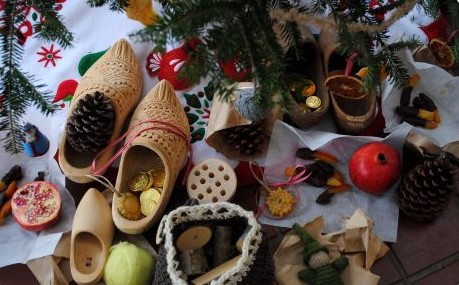
Experience the thrill of a visit from Krampus, the cloven-footed companion of St. Nicholas
During Saint Nicholas’ Day, not everything is festive and bright because of Krampus.
This menacing figure accompanies Saint Nicholas in many parts of the world to punish children who misbehave.
You are most likely to encounter Krampus in Germany, Austria, Hungary, Slovenia, and the Czech Republic.
He is often portrayed as a half-man, half-goat creature that borrows characteristics from demons, beasts, and the devil. Legend has it that Krampus travels with Saint Nicholas and either leaves coal for naughty children or kidnaps them in his sack.
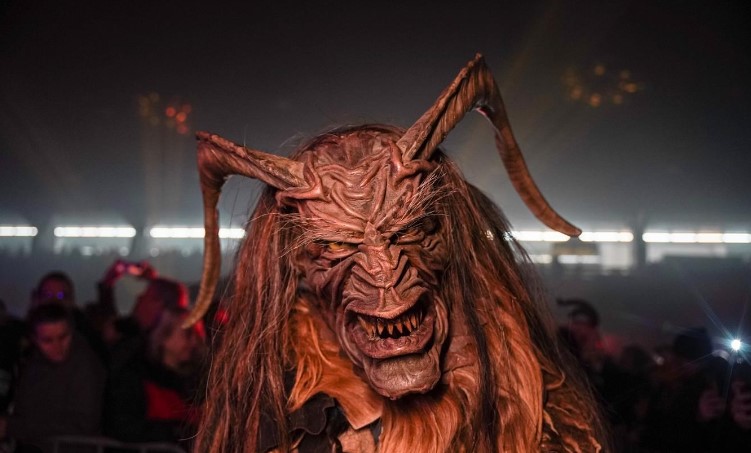
There is another spine-chilling tradition associated with Krampus: the Eve of Saint Nicholas’ Day is known as Krampusnacht or Krampus Night in some parts of Europe.
On this night, Krampus visits the homes of misbehaving children, which is enough to motivate them to behave well.
Discover similar tips
A companion of St. Nicholas – where did these two characters come from?
It is believed that over time, the legendary figure of St. Nicholas was merged with other cultural and religious figures.
Among these were the pagan Knecht Ruprecht, the Roman figure of Befana, and the Christ Child (also known as Christkind or Kris Kringle).
In several countries, it is customary for a malevolent character to accompany St. Nicholas. For instance, in France, Père Fouettard, who is said to have tried to cook three boys in a barrel of brine, punishes naughty children by whipping them or giving them coal.
In Germany, Knecht Ruprecht, who is St. Nicholas’s servant, gives children who do not know their prayers sticks, stones, or coal.
The terrifying Krampus, resembling a devil, is common in many central European countries and carries chains, bells, and sometimes a large basket to threaten naughty children.
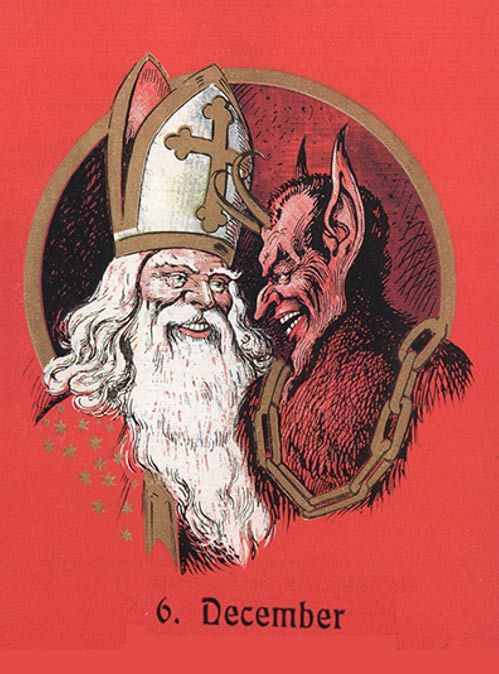
Where did the Angel came from?
The tradition of boys’ bishop’s games has been celebrated for centuries at monastery schools in the Rhineland. It began in the 10th century and evolved over time, with the game’s winner receiving a staff and gifts in the 13th century.
The evolution of the game led to the creation of the devil and angel characters, which serve as a reminder to praise good behavior and correct bad behavior.
It’s inspiring to see how a simple tradition has stood the test of time and continues to teach valuable lessons to children.
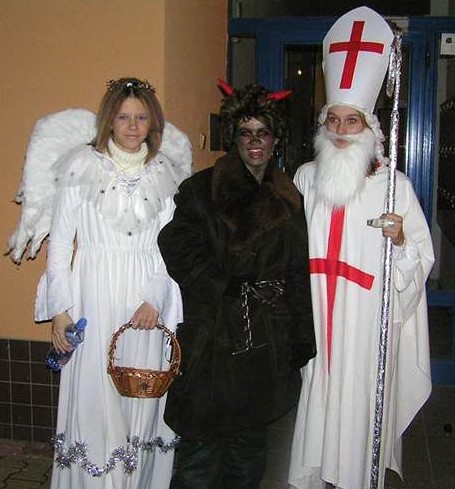
Saint Nicholas Day outside the Europe
Did you know that Saint Nicholas Day is celebrated in the Carribean, too?
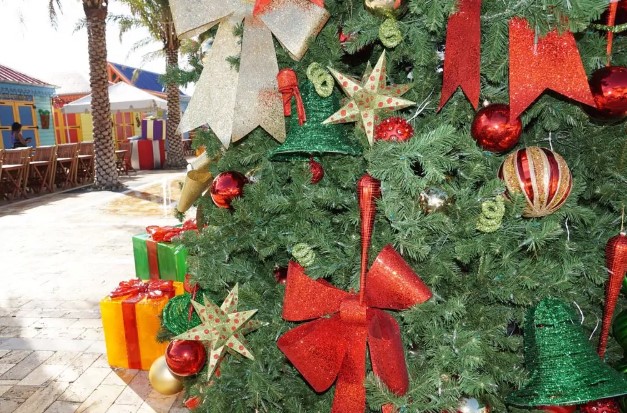
During the end of November in Curacao, the festivities dedicated to St. Nicholas begin.
According to tradition, St. Nicholas travels by ship from Spain and is welcomed in the harbor of Willemstad. During the parade that follows, St. Nicholas walks through the streets with his “Black Peters,” distributing small gifts.
Until the actual St. Nicholas Day, there are further festive events happening on Curacao.
On December 6, an old Dutch tradition is celebrated on Curacao. The night before, children prepare a bucket of water and a shoe filled with hay for the white horse of St. Nicholas. While good children find their shoe filled with sweets and toys the next morning, naughty children need to fear being put in the sack of “Black Peter.”
Are you looking for inspiration for Christmas poems or nursery rhymes? We have some tips!


 Milan & Ondra
Milan & Ondra
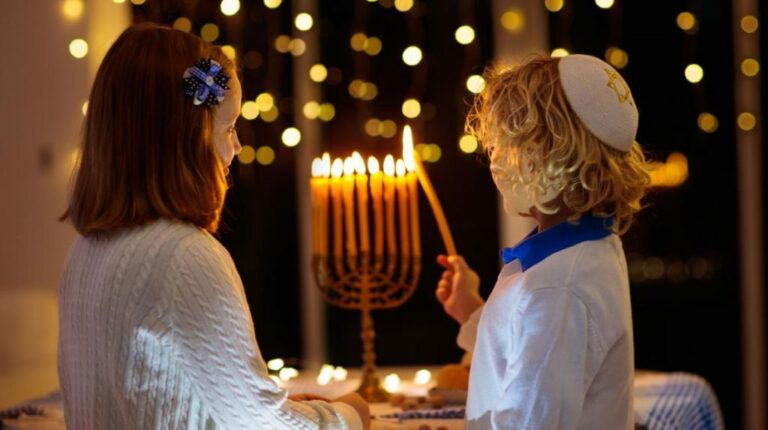
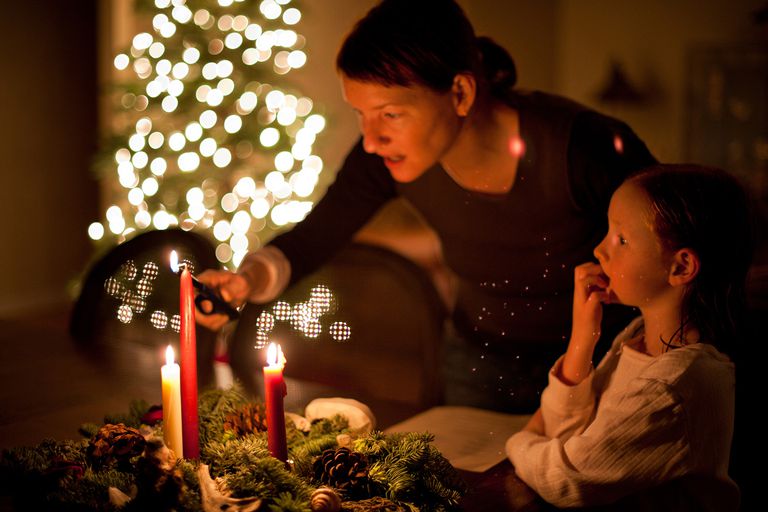

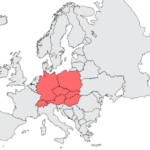 Central Europe
Central Europe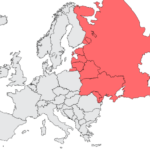 Eastern Europe
Eastern Europe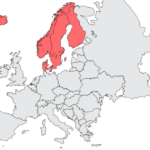 Northern Europe
Northern Europe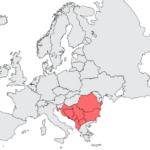 Southeast Europe
Southeast Europe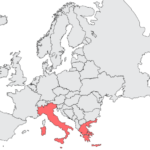 Southern Europe
Southern Europe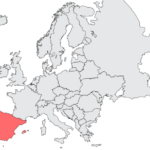 Southwestern Europe
Southwestern Europe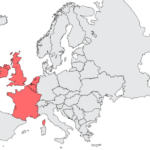 Western Europe
Western Europe